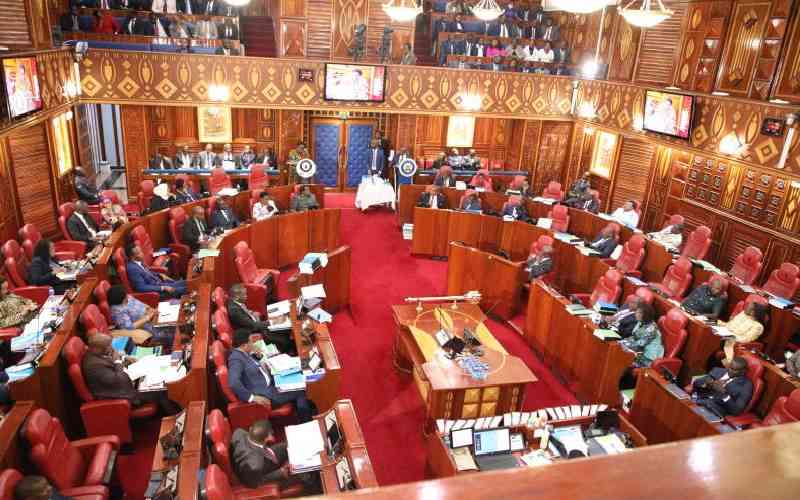Kenya: Just what is the squabble between the National Government and the County governments all about?
The Devolution Conference in Mombasa got under way on April 2 and reports indicate that the National Government officers have stayed away from it. Only a few of the latter’s representatives showed up and then left.
Reasons for the sudden change of plans by the Executive have been given, but none looks plausible enough to explain away the obvious tiff between these levels of government that has simmered for long.
This is regrettable because the conference offered a bonding session for both levels of Government to sit and reflect on the hits and the misses of the past year.
Sadly, the new development will aggravate the already frosty relationship.
No doubt, the happenings of the last year have been cloaked in melodrama with each party trying to score against the other. These contests of attrition serve no purpose because in the end, both levels complement each other in governance.
As reiterated here before, the devolved system of governance is turning around the landscape of rural Kenya and it should therefore be embraced and nurtured.
There are a few areas that have not worked, but that should not be a reason to kill devolution by word or deed.
First, devolution is here to stay.
Secondly, history has a few sobering lessons for the country about the centralised system.
For 50 long years, Kenyans were accustomed to a system of government that was far away in the capital.
In Nairobi, policy wonks drew up policy papers for places they had not the least idea where they were on the map of Kenya, leading to misalignment of resources with the resulting consequence being that certain areas became more developed than others. Accountability was absent and Parliament did not enjoy the independence to hold the Executive to account.
Over time, the citizenry inured itself to a system that propagated negative ethnicity, tribalism, exclusivity. The system encourage a free-for-a-few mentality devoid of social justice and integrity and transparency. Corruption became a way of life. For many, it felt like the rungs had been removed from the ladder of opportunity. Devolution has given that back to them. And that is the vision the framers of the 2010 Constitution had in mind.
They envisioned that the two levels would work together for the common good of the country.
Many acknowledge that devolution offers a fresh breath of air. The system offers a people-centred approach to leadership, a key ingredient for development. It upholds participation and consultation and transparency. No longer will Treasury mandarins dish out money as it pleases them. It offers equality.
Stay informed. Subscribe to our newsletter
In a nutshell, it offers to redraw the past, by correcting its mistakes.
Therefore, all should protect devolution and fix the machine while it is running. To switch it off might make it hard to restart.
That means the Executive must address the capacity issues that are evident in the counties. It also means that county executives must promote accountability and transparency. Meanwhile, the citizenry should exercise patience. One year is too little a time to expect so much. After all, Rome was not built in a day.
 The Standard Group Plc is a
multi-media organization with investments in media platforms spanning newspaper
print operations, television, radio broadcasting, digital and online services. The
Standard Group is recognized as a leading multi-media house in Kenya with a key
influence in matters of national and international interest.
The Standard Group Plc is a
multi-media organization with investments in media platforms spanning newspaper
print operations, television, radio broadcasting, digital and online services. The
Standard Group is recognized as a leading multi-media house in Kenya with a key
influence in matters of national and international interest.
 The Standard Group Plc is a
multi-media organization with investments in media platforms spanning newspaper
print operations, television, radio broadcasting, digital and online services. The
Standard Group is recognized as a leading multi-media house in Kenya with a key
influence in matters of national and international interest.
The Standard Group Plc is a
multi-media organization with investments in media platforms spanning newspaper
print operations, television, radio broadcasting, digital and online services. The
Standard Group is recognized as a leading multi-media house in Kenya with a key
influence in matters of national and international interest.








